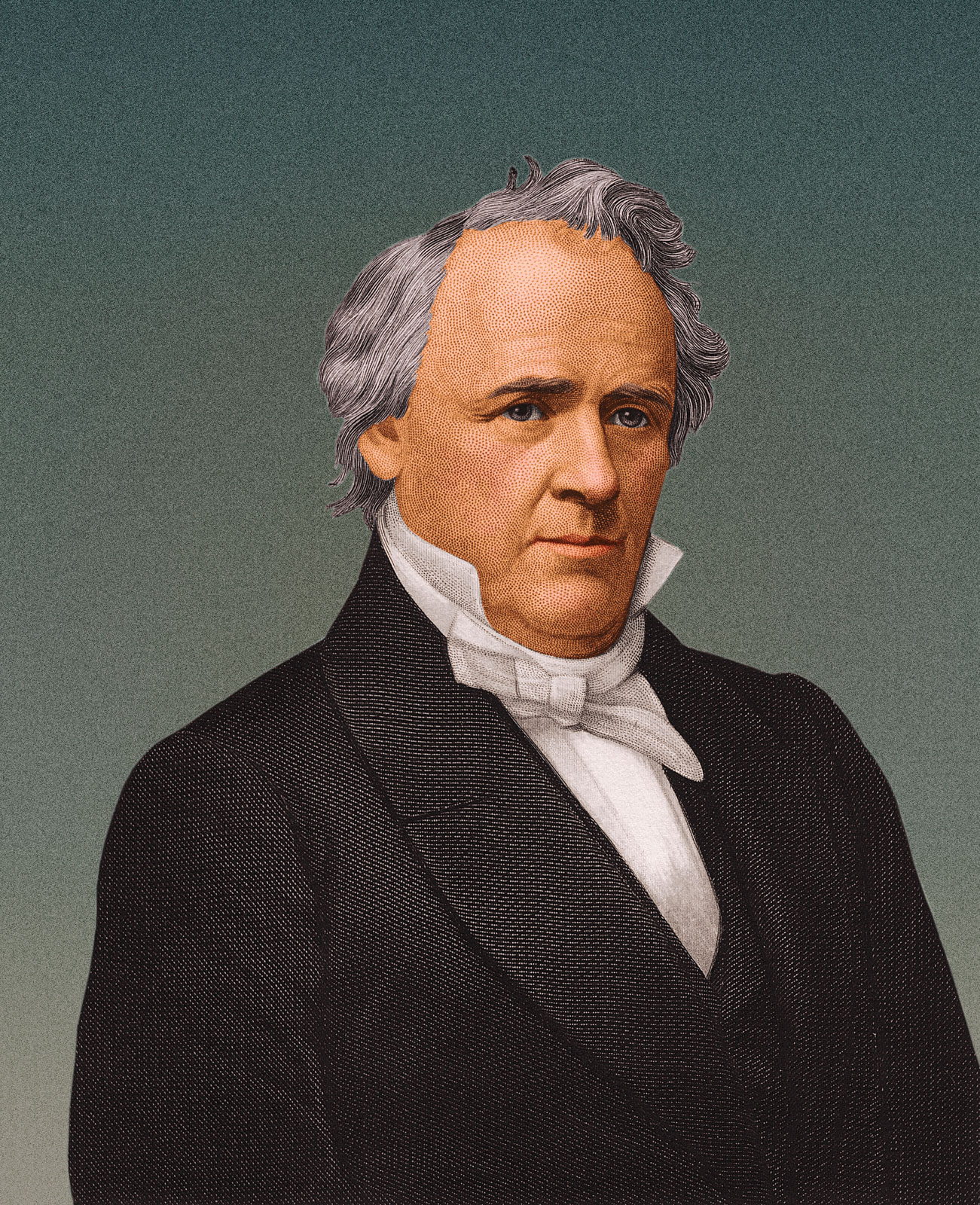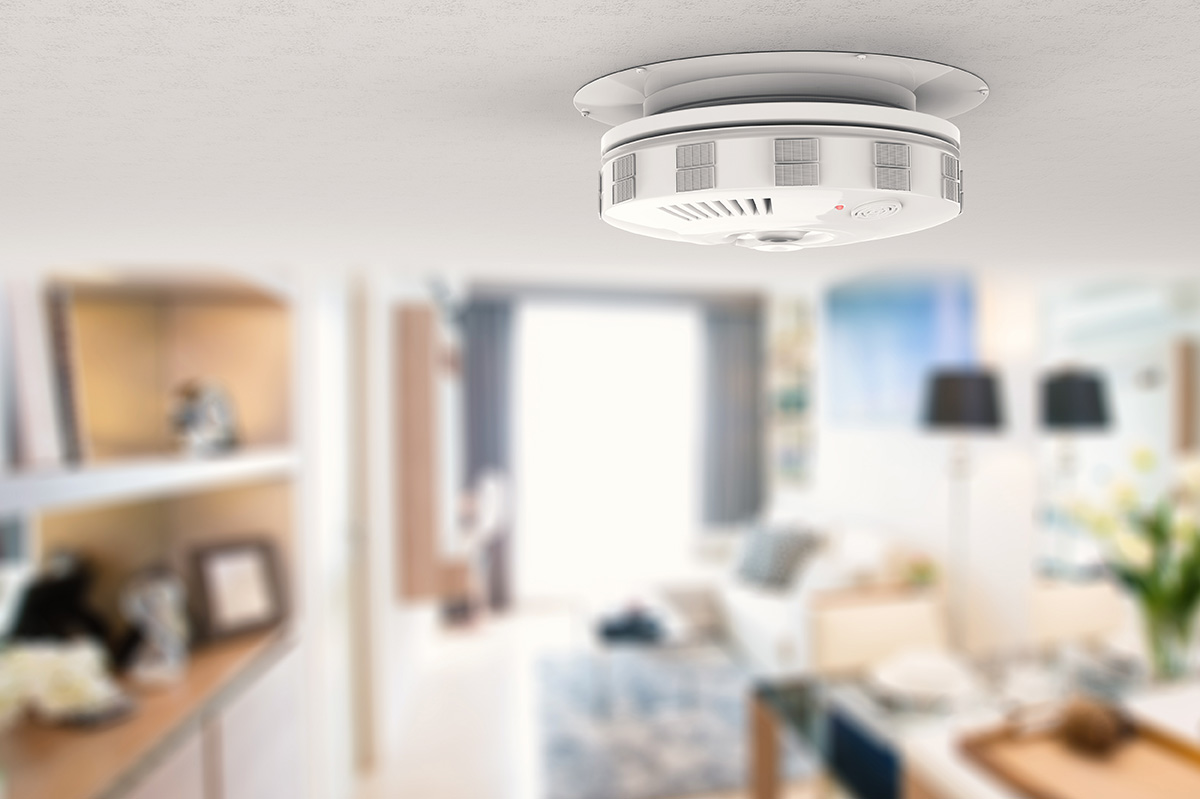Living
James Buchanan: America’s first gay president?
Buchanan was a lifelong bachelor, colleagues on the Hill viewed he and Alabama Senator William Rufus King as a couple

This is the first in a series that will run throughout October in conjunction with our friends at the Philadelphia Gay News and partners around the nation. We hope that you treasure these little looks at where we’ve come, as they help us reflect and prepare for where we are going.
By Timothy Cwiek
National Gay History Project
More than 150 years before America elected its first black president, Barack Obama, it most likely had its first gay president, James Buchanan (1791-1868).
Buchanan, a Democrat from Lancaster County, Pa., was the 15th president of the United States, and a lifelong bachelor. He served as president from 1857-61, tumultuous years leading up to the Civil War.
Historian James W. Loewen has done extensive research into Buchanan’s personal life, and he’s convinced Buchanan was gay.
Loewen is the author of the acclaimed book “Lies Across America,” which examines how historical sites inaccurately portray figures and events in America’s past.
“I’m sure that Buchanan was gay,” Loewen said. “There is clear evidence that he was gay. And since I haven’t seen any evidence that he was heterosexual, I don’t believe he was bisexual.”
According to Loewen, Buchanan shared a residence with William Rufus King, a Democratic senator from Alabama, for several years in Washington, D.C.
Loewen said contemporary records indicate the two men were inseparable, and wags would refer to them as “the Siamese twins.”
Loewen also said Buchanan was “fairly open” about his relationship with King, causing some colleagues to view the men as a couple.
For example, Aaron Brown, a prominent Democrat, writing to Mrs. James K. Polk, referred to King as Buchanan’s “better half,” “his wife” and “Aunt Fancy … rigged out in her best clothes.”
In 1844, when King was appointed minister to France, he wrote Buchanan, “I am selfish enough to hope you will not be able to procure an associate who will cause you to feel no regret at our separation.”
Loewen also said a letter Buchanan wrote to a friend after King went to France shows the depth of his feeling for King.
“I am now solitary and alone, having no companion in the house with me,” Buchanan wrote. “I have gone a wooing to several gentlemen, but have not succeeded with any one of them. I feel that it is not good for man to be alone; and should not be astonished to find myself married to some old maid who can nurse me when I am sick provide good dinners for me when I am well, and not expect from me any very ardent or romantic affection.”
Loewen said their relationship — though interrupted due to foreign-service obligations — ended only with King’s death in 1853.
In the late 1990s, Loewen visited Wheatland, the mansion in Lancaster, Pa., where Buchanan spent his later years.
Loewen said he asked a staffer at Wheatland if Buchanan was gay, and the reply was: “He most definitely was not.”
Loewen said the staffer pointed to a portrait of Ann Coleman, the daughter of a wealthy iron maker, whom Buchanan was engaged to briefly 1819 — shortly before she committed suicide.
However, Loewen scoffed at the staffer’s suggestion that the brief engagement to Coleman proved Buchanan was heterosexual.
Loewen said Buchanan showed little interest in Coleman, appeared more interested in her fortune, and possibly contributed to her suicide due to his emotional detachment.
Patrick Clarke, the director of Wheatland, said the staff now takes a neutral stance on Buchanan’s sexual or affectional preference.
“There’s no solid proof that Buchanan was heterosexual, nor is there solid proof that he was homosexual,” Clarke said. “If we ever come up with a smoking gun that proves it one way or the other, I would definitely encourage our staff to share it with the public.”
But, he said Ann Coleman’s portrait no longer is displayed at Wheatland.
The tours focus mainly on the mansion’s décor and activities that took place there during the later years of Buchanan’s life, he added.
Wheatland also has about 45 volunteer tour guides, and to Clarke’s knowledge, none of the guides is openly gay.
“The volunteer guides who we train to share the history of James Buchanan’s life and times are directed to take a neutral stance regarding [his] sexual preference,” Clarke said.
But Clarke said he wouldn’t object if a volunteer offered a personal opinion that Buchanan was gay, if asked by a visitor.
“When you have 50 minutes to take people through a nine-room house, there’s only so much you can discuss,” Clarke said. “But if the question is raised, the guide may express a personal opinion.”
Loewen said many historians rate Buchanan as one of the worst U.S. presidents. Buchanan was part of the pro-slavery wing of the Democratic Party, and corruption plagued his administration.
But Loewen said those flaws shouldn’t discourage members of the LGBT community from acknowledging Buchanan’s status as a gay man.
“Lots of gay people have been exemplary,” he said. “Let’s look at Walt Whitman. For my money, he’s the best poet in the history of the country. But we also have to acknowledge the failures. If we only admit that really great people are gay, what kind of history is that? And how is that believable? It’s ridiculous. We have to tell it like it was.”
As a heterosexual male, Loewen added, he has no hidden agenda in outing Buchanan.
“I’m not gay,” Loewen said. “I don’t run around trying to find gay folks or black folks underneath every rock. But I’m not going to ignore clear evidence.”
Timothy Cwiek holds a bachelor of art degree in U.S. history from West Chester University. He has written for Philadelphia Gay News since the late 1970s and written freelance articles for numerous publications on topics such as the Lincoln assassination, the Kennedy family, the shootings at Kent State University, first ladies and the macrobiotic movement in America.
Introduction to the National Gay History Project:
Historians take note. This year’s National Gay History Project is a shout out to say that the LGBT community will no longer allow insensitivity, intentional or not, to downplay the contributions LGBT people have made to this country. To put it simply, this year’s project is definitive. Without people who were LGBT or LGBT allies, there would be no United States of America. We helped create this nation and we helped keep it together through the Civil War. And indeed, the Founding Fathers not only had us in mind when creating this country, they welcomed and recruited us in their efforts.
Welcome to “We Are America.”
Mark Segal
coordinator
Real Estate
Tips for buying a house in Rehoboth Beach
And why it’s a great fit for the LGBTQ community

If you’ve ever dreamed of owning a charming beach house where flip-flops are considered formalwear and sunsets are your daily entertainment, Rehoboth Beach, Del., might just be your dream come true. It’s not just a beautiful coastal town—it’s also a long celebrated safe haven and vibrant hub for the LGBTQ community. Let’s dive into why Rehoboth Beach is a fabulous choice and how to make a savvy beach house purchase.
Why Rehoboth Is a Vibe (especially for the LGBTQ community)
1. A Welcoming, Inclusive Community
Rehoboth Beach has been lovingly nicknamed the “Nation’s Summer Capital,” and it’s not just because of its proximity to D.C. For decades, Rehoboth has built a reputation as a warm, inclusive, and LGBTQ-friendly destination. From gay-owned businesses to LGBTQ events and nightlife, this is a town where you can truly be yourself.
2. Packed Social Calendar
Poodle Beach, the LGBTQ beach hangout just south of the boardwalk, is always buzzing in the summer. Events like Rehoboth Beach Bear Weekend, Women’s FEST, and CAMP Rehoboth’s myriad of social and wellness events bring people together all year round. That’s right—you’ll never be bored here unless you want to be.
3. Small Town Charm Meets Big City Culture
You get art galleries, drag brunches, live theater, eclectic cuisine, and adorable boutiques—basically everything your soul craves—without the chaos and crowds of major cities. It’s quaint but never boring. Think: Key West vibes with a Delaware zip code.
Tips for Buying Your Dream Beach House
1. Know Your Budget and Think Long Term. Beachfront and near-beach properties come at a premium. Expect to pay a bit more for proximity to the sand and ocean views.
2. Choose Your Neighborhood Wisely. Do you want to be walking distance from the action on the boardwalk? Or do you prefer something more secluded in areas like North Shores or Henlopen Acres?
3. Rental Potential. If you’re not living there full time, your beach house could work overtime as a vacation rental. Rehoboth Beach has a healthy short-term rental market, especially in peak summer. Often times LGBTQ travelers actively seek inclusive, affirming places to stay.
4. Weather the Weather. Like all coastal areas, Rehoboth comes with a side of salt air and occasional storms. Invest in a good home inspection, especially for older homes, and be prepared for the maintenance that comes with beachfront living (yes, that includes sand everywhere).
5. Work With a Local Real Estate Agent. Look for an agent who knows Rehoboth inside and out and understands the unique needs of LGBTQ buyers. This isn’t just a house — it’s your happy place. You want someone who sees that and says, “Let’s find your sanctuary.”
Buying a beach house in Rehoboth Beach isn’t just about real estate — it’s about finding a space that reflects your lifestyle, values, and need for both community and calm. Whether it becomes your full-time home, your weekend escape, or your Airbnb side hustle, Rehoboth welcomes you with open arms (and maybe a mimosa).
Want personalized tips on navigating the Rehoboth Beach real estate market? Let’s chat! I’ll bring the listings if you bring the sunscreen.
Justin Noble is a Realtor with The Burns & Noble Group with Sotheby’s International Realty, licensed in D.C., Maryland, and Delaware. Reach him at [email protected] or 202-234-3344.
Real Estate
Impact of federal gov’t RIF on D.C.’s rental market
A seismic economic change for local property owners

In a move that could redefine the federal government workforce and reshape the economic fabric of Washington, D.C., President Donald Trump has announced his intentions to significantly reduce federal government spending as well as the number of people the federal government employs.
Calling the federal bureaucracy “bloated” and “out of control,” Trump has repeatedly expressed his desire to cut thousands of federal jobs. While these cuts align with his long-standing push to “drain the swamp,” they come with potential and real collateral damage, especially for landlords in the D.C. area who have relied on government employees as some of their most reliable and long-term tenants.
The potential reduction of thousands of jobs in a city built around government work is not just a political shift—it’s a seismic economic change for the city government as well as for local property owners who have invested in the predictability of a near-constant demand for workers in the federal government agencies, government contractors and the economic ecosystem they sustain.
For landlords, government workers have represented ideal tenants: strong income, long-term leases, and responsible rental histories. Now, that foundation is being shaken in a battle by the Administration against a workforce which is the backbone of the Washington area’s overall economy, and especially its rental market.
With uncertainty looming, landlords are left in a difficult position. If widespread layoffs come to fruition, rental vacancies could spike, rental prices would drop, and previously secure investment properties might become financial liabilities. The sudden shift forces landlords to consider their next moves: how to support tenants facing job losses, how to adapt to a changing market, and how to ensure their own financial stability amid the uncertainty.
For D.C. landlords, this isn’t just about policy shifts or budget cuts, it’s about economic livelihood. The challenge ahead isn’t about just reacting to change, but proactively preparing for it, ensuring they can weather the storm of political maneuvering.
Potential Consequences for D.C. Landlords
- 1. Increased Risk of Non-Payment of Rent
- Job losses may lead to late or missed rent payments
- As affected tenants struggle financially, they may ask to break their lease to live elsewhere or even move out of the region
- Eviction lawsuits may rise, leading to a long and expensive process for landlords, all while not being able to rent their property to paying tenants.
- 2. Higher Vacancy Rates
- If many government employees leave the D.C. region in search of work elsewhere, the rental demand could decline significantly
- Rental properties may sit empty longer, requiring landlords to lower rents to attract new tenants and creating even more financial loss
3. More Competition from Other Landlords
- As many more units are vacant on the market, all competing for the same pool of potential tenants, older and smaller rentals, and those located further out from the core of the city will all struggle to find quality renters.
- Landlords will need to offer other ways to attract and retain tenants, such as incentives, which could quickly overwhelm the finances of smaller landlords who cannot keep up.
Proactive Strategies for Landlords
To mitigate risks and ensure future rental success, landlords should consider these defensive measures:
1. Strengthen Tenant Relationships and Communication
- Encourage tenants to communicate if they anticipate financial hardship due to job loss.
- Work out temporary payment plans or partial payments to prevent full non-payment or eviction.
- Provide guidance on rental assistance programs available in D.C.
2. Offer Flexible Lease Terms
- Consider shorter-term leases than a full 12-month term to accommodate the needs of tenants who may be uncertain about their long-term employment status.
- Offer lease renewals at the same rent amount to keep stable tenants and avoid turnover
3. Diversify Tenant Base
- If a large portion of tenants are government workers, a landlord may want to market to a broader audience or professionals in private industries.
- Advertise on platforms that cater to diverse tenant pools, including students and international workers.
4. Adjust Screening Criteria Thoughtfully
- While it’s important to ensure financial stability, consider creditworthiness, assets, and rental history rather than just employment status.
- Consider alternative income sources, like family members assisting, part-time work or freelance gigs.
5. Protect Cash Flow with Rent Guarantee Options
- Explore rental insurance policies or rent guarantee services to cover losses in case of non-payment.
- Consider co-signers or guarantors on leases for new tenants in vulnerable industries, just in case.
6. Adjust Rental Pricing to Stay Competitive
- Monitor the D.C. rental market and adjust pricing accordingly to attract new tenants.
- Consider offering move-in incentives as a way to stand out. Be creative! Sometimes things you can offer are different and may catch someone’s eye
Long-Term Planning for Rental Success
- Build reserves to cover expenses during potential vacancies or rent shortfalls.
- Invest in property upgrades to make rentals more attractive to a broader audience, such as young professionals or remote workers.
- Consider diversifying property holdings to include areas that are less reliant on government employment.
By taking proactive steps, landlords can safeguard their investments while supporting tenants through economic uncertainty, ultimately leading to a more stable and resilient rental business.
Scott Bloom is owner and senior property manager at Columbia Property Management. For more information, visit ColumbiaPM.com.

As the spring market hits its stride, we are beginning to see more inventory and an increase in days on the market in parts of the DMV. This may result in professional home inspections becoming routine parts of contract offers again. A thorough home inspection can help catch safety issues early and is an opportunity to learn about the operation and maintenance of items in your home.
Pay attention to flickering lights, frequently tripped breakers, and discolored outlets—these are signs of potential electrical hazards. Outdated wiring, overloaded outlets, and faulty appliances can lead to electrical fires.
Structural issues are often overlooked until it’s too late. Crumbling foundations, weak or damaged stairs, loose railings, and uneven flooring can cause trips and falls. Water damage from leaks or flooding can weaken the integrity of floors and walls, creating a risk of collapse.
Toxic chemicals can pose serious threats to health and safety, often without obvious warning signs. Understanding and addressing these risks is crucial for maintaining a safe living environment for you and your loved ones.
Household products such as cleaners, pesticides, air fresheners, and even cosmetics can emit volatile organic compounds (VOCs). These compounds, when inhaled regularly, can cause a range of health issues including headaches, respiratory problems, hormonal disruptions, and in some cases, even cancer. To minimize these risks, homeowners should opt for low-VOC or VOC-free products, ventilate regularly, and consider investing in an air purifier.
Formaldehyde is another common toxin found in pressed wood products, insulation, and certain paints. Long-term exposure can lead to chronic respiratory problems and has been linked to cancer.
Radon gas, another possible carcinogen, is prevalent in the DMV. Your home inspector can do a radon test or there are DIY kits available at many hardware stores. If levels are above EPA standards, a professional remediation firm can install a system that extracts the radon and vents it safely outdoors.
Carbon monoxide (CO), a colorless, odorless gas, is produced by gas stoves, heaters, and fireplaces. Exposure can lead to headaches, dizziness, nausea, and even death. Install CO detectors near bedrooms and ensure that all fuel-burning appliances are properly maintained and ventilated.
Additionally, older homes may still contain asbestos in insulation, floor tiles, or roofing materials. If disturbed, asbestos fibers can become airborne and are highly dangerous when inhaled, leading to serious diseases such as mesothelioma, so when renovating an older home, it’s critical to have materials tested for asbestos before beginning work.
Mold and mildew thrive in damp, poorly ventilated areas such as bathrooms, basements, and around leaky pipes. While some molds are harmless, others can cause allergic reactions or respiratory problems and aggravate conditions such as asthma. Black mold (Stachybotrys chartarum) is notorious for producing mycotoxins that may lead to severe health issues.
Signs of mold include musty odors, visible growth on walls or ceilings, and excessive humidity. Preventing mold growth requires controlling moisture levels—using dehumidifiers and vapor barriers, fixing leaks promptly, and ensuring adequate ventilation. Professional mold remediation may be necessary for severe infestations.
Though banned in residential paints in 1978, lead-based paint still exists in millions of older homes. Lead exposure is especially dangerous for children, causing developmental delays, learning difficulties, and behavioral issues. Adults are not immune – lead can lead to high blood pressure, kidney damage, and reproductive problems.
Even dust from deteriorating lead-based paint can be hazardous. The EPA recommends professional lead testing for any home built before 1978, especially if renovations are planned. Certified abatement professionals can safely remove or encapsulate lead paint.
Improper use of heating equipment, fireplaces, unattended candles, and cooking accidents are common sources of home fires. Smoke alarms and fire extinguishers are essential for early detection and response. Test smoke detectors monthly and change batteries at least once a year.
Homes that are safe for adults may not be safe for children or pets. Small objects, unsecured cabinets, toxic plants, and open staircases can pose significant risks. Childproofing measures such as outlet covers, safety gates, and cabinet locks, along with safe storage of chemicals and medications, are essential precautions.
The good news is that many of these risks can be mitigated with awareness and action. Here are a few simple steps to enhance home safety:
• Conduct a thorough safety audit using checklists available online.
• Ensure proper ventilation to reduce indoor air pollutants.
• Regularly check for leaks and signs of water damage.
• Keep cleaning and chemical products out of reach of children.
• Educate all household members about emergency procedures, including fire escapes and first aid.
Our homes should protect us, not pose threats to our well-being. By identifying and addressing these toxic and unsafe issues, we can transform our living spaces into truly safe havens.
Valerie M. Blake is a licensed Associate Broker in D.C., Maryland, and Virginia with RLAH @properties. Call or text her at 202-246-8602, email her via DCHomeQuest.com, or follow her on Facebook at TheRealst8ofAffairs.





















